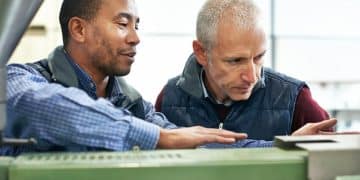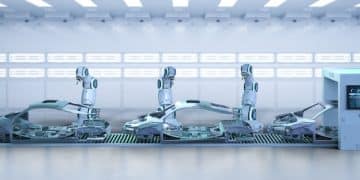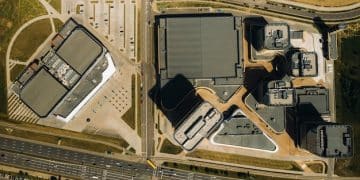Automotive Workforce Evolution: EV Shift Projections
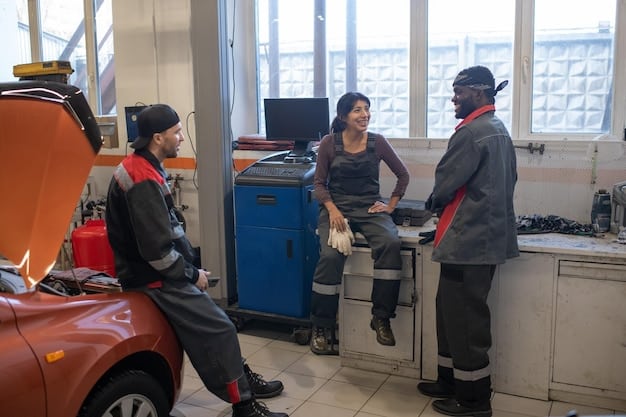
The shift towards electric vehicles (EVs) is expected to significantly reshape the automotive workforce in the US, leading to new job roles in areas like battery technology and electric powertrain maintenance, while also causing a decline in traditional manufacturing positions.
The rise of electric vehicles (EVs) is not just changing what we drive, but also who builds and maintains those vehicles. The automotive industry, a cornerstone of the US economy, is on the cusp of a profound transformation, and understanding **what are the projected changes in the automotive workforce due to the shift towards electric vehicles** is crucial for workers, companies, and policymakers alike.
The Electric Revolution: A Turning Point for Automotive Jobs
The transition from internal combustion engine (ICE) vehicles to EVs represents a paradigm shift. It’s not simply about swapping out engines; it’s about reimagining the entire automotive ecosystem. This transformation brings both opportunities and challenges to the workforce, demanding new skill sets and potentially displacing existing roles.
The Rise of the EV Technician
As EVs become more prevalent, the demand for skilled technicians capable of servicing and repairing these vehicles will increase significantly. These technicians will need specialized knowledge of battery technology, electric powertrains, and advanced diagnostic tools.
Traditional mechanics will need to adapt their skills or risk becoming obsolete. The future of automotive repair lies in the ability to diagnose and fix complex electrical systems and software issues.
- Increased demand for specialized EV training programs.
- Opportunities for experienced mechanics to upskill and transition to EV repair.
- Potential shortages of qualified EV technicians in the short term.
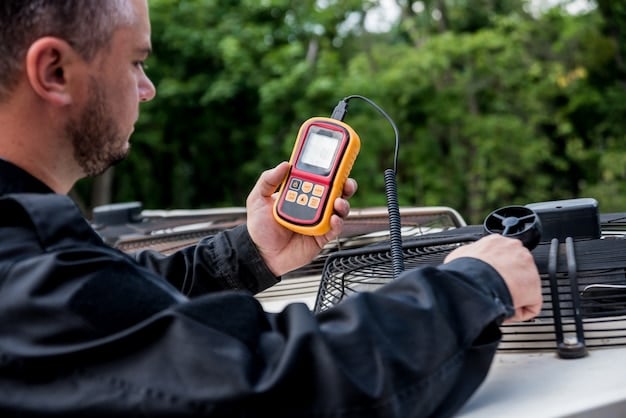
The shift towards EVs isn’t just about the technicians that repair them however, it includes the design, the safety and even the sales aspect of the vehicles.
Manufacturing in the Age of Electric Cars
The manufacturing process for EVs differs significantly from that of ICE vehicles. EVs have fewer moving parts, which simplifies assembly and reduces the need for certain manufacturing processes. This shift could lead to job losses in areas related to engine and transmission manufacturing.
The Battery Manufacturing Boom
One area that will see substantial growth is battery manufacturing. Gigafactories are springing up across the US, creating thousands of jobs in cell production, module assembly, and pack integration.
These jobs require a different skill set than traditional automotive manufacturing, with a greater emphasis on chemistry, materials science, and automation.
- Significant investment in battery manufacturing facilities in the US.
- Creation of high-paying jobs in advanced manufacturing.
- Potential for regional economic growth in areas hosting battery plants.
The Impact on the Supply Chain
The automotive supply chain is also undergoing a major transformation. Traditional suppliers of engine and transmission components may see their business decline, while new suppliers specializing in EV-related technologies will emerge.
Reskilling the Supply Chain Workforce
The transition to EVs requires suppliers to adapt their capabilities and reskill their workforce. This includes investing in new equipment, processes, and training programs.
Suppliers that are slow to adapt risk losing market share to competitors who are more agile and innovative.

It is important to note that it is not just physical parts and new suppliers that matter. The supply chain also includes software.
- Opportunities for suppliers to diversify their product offerings and enter new markets.
- Increased demand for skilled workers in areas such as software development and data analytics.
- Potential for supply chain disruptions due to raw material shortages and geopolitical factors.
New Roles in Software and Connectivity
EVs are essentially computers on wheels, relying heavily on software for everything from battery management to autonomous driving features. This creates a demand for software engineers, data scientists, and cybersecurity experts.
The Software-Defined Vehicle
The automotive industry is moving towards a software-defined vehicle architecture, where software plays a central role in vehicle functionality and performance. This requires a new breed of automotive professionals with expertise in software development, artificial intelligence, and cloud computing.
These roles are often concentrated in tech hubs, which could lead to a geographic shift in automotive employment.
The vehicles need software. The software needs people. The roles available are plentiful, if you have the expertise.
Retraining and Upskilling Initiatives
To mitigate the negative impacts of the EV transition on the workforce, retraining and upskilling initiatives are essential. Governments, automakers, and educational institutions need to collaborate to provide workers with the skills they need to succeed in the new automotive landscape.
Investing in the Future Workforce
Successful retraining programs should focus on providing hands-on training in areas such as EV repair, battery manufacturing, and software development. These programs should also be accessible to workers from all backgrounds and skill levels.
Furthermore, these programs will need to be easily accessible, affordable and they will need to provide a tangible outcome.
- Government funding for retraining programs and apprenticeships.
- Partnerships between automakers and community colleges to develop EV training programs.
- Online learning platforms offering courses in EV technology and related fields.
Policy and Economic Considerations
The transition to EVs has significant policy and economic implications. Governments need to develop policies that support the growth of the EV industry while also ensuring a smooth transition for workers and communities affected by job losses.
Supporting a Just Transition
Policies should focus on providing financial assistance to displaced workers, investing in retraining programs, and promoting regional economic diversification. It is crucial to ensure that the benefits of the EV transition are shared broadly and that no one is left behind.
Subsidies can also have a part to play and ensuring that people are not negatively impact.
- Incentives for automakers to invest in US-based EV manufacturing.
- Tax credits for consumers who purchase EVs.
- Investments in charging infrastructure to support the growth of the EV market.
| Key Point | Brief Description |
|---|---|
| 🛠️ EV Technician Demand | Increased need for skilled technicians to service electric vehicles. |
| 🔋 Battery Manufacturing | Growth in battery production creates jobs in advanced manufacturing. |
| 💻 Software & Connectivity | EVs need the next generation of software and connectivity staff. |
| 🔄 Reskilling Initiatives | Essential for workers to adapt to the EV industry’s changing needs. |
FAQ
▼
Skills in battery diagnostics, electric motor repair, and software troubleshooting will be highly sought after as electric vehicles continue to populate roadways across the US.
▼
Estimates vary, but industry analysts project tens of thousands of new battery manufacturing jobs will be created as companies invest billions in domestic production facilities.
▼
Community colleges, technical schools, and automakers themselves are offering programs in EV repair, battery technology, and advanced manufacturing to help workers adapt.
▼
The government provides incentives for EV purchases, invests in charging infrastructure to support the growth of the EV market, and offers funding for retraining programs.
▼
Traditional suppliers of parts may see business decline but new suppliers specializing in EV-related technologies should emerge, with impacts to software and manufacturing jobs overall.
Conclusion
The shift toward electric vehicles is undeniably reshaping the automotive workforce, bringing forth both challenges and opportunities. While some traditional manufacturing roles may face decline, new jobs are emerging in areas like battery technology, software development, and EV maintenance. Embracing retraining initiatives, adapting supply chains, and strategic policy implementation are imperative to ensuring a smooth transition for workers, maximizing the economic benefits of the EV revolution, and securing a sustainable future for the US automotive industry.
